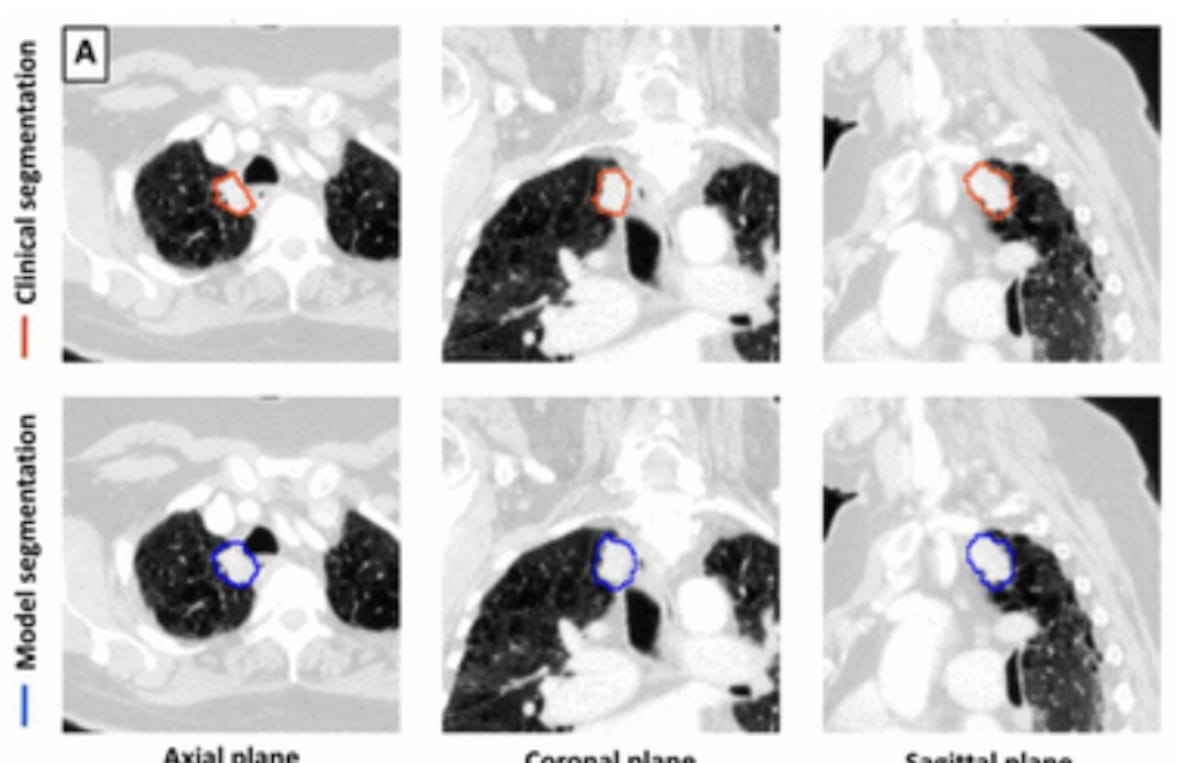Can deep learning provide viable automation of lung tumor detection and segmentation based on computed tomography (CT) scans?
For a new retrospective study, recently published in Radiology, researchers assessed the capability of a deep learning model to detect and segment lung tumors in 150 chest CT cases. The overall cohort was comprised of 41 CT scans for internal testing, 59 CT scans for external validation testing and 50 scans derived from a non-tumor test set, according to the study. The study authors noted that the deep learning model was trained on over 1,500 CT scans.
The researchers found that the deep learning model provided a 92 percent sensitivity rate and an 82 percent specificity rate in diagnosing lung tumors on CT.
“ … Despite differences in the scanning devices and practice patterns between (sites), the (deep learning) model demonstrated strong performance in internal and external test sets, suggesting that training on a large, heterogeneous dataset of clinical segmentations produced robust and generalizable results,” wrote lead study author Mehr Kashyap, M.D., who is affiliated with the Department of Medicine at the Stanford University School of Medicine in Stanford, Calif., and colleagues.
The study authors also noted a median Dice similarity coefficient (DSC) of 77 percent for adjunctive use of the deep learning model in comparison to an inter-physician DSC of 80 percent. The research findings also indicated up to a 59 percent reduction with deep learning segmentation of lung tumors (mean of 76.6 seconds) in contrast to unassisted segmentation (ranging between 166.1 and 187.7 seconds).
Three Key Takeaways
1. Accuracy and efficiency. The deep learning model demonstrated a high sensitivity rate of 92 percent and specificity rate of 82 percent in diagnosing lung tumors from CT scans. It also significantly reduced segmentation time by up to 59 percent, suggesting its potential to enhance workflow efficiency.
2. Robustness and generalizability. Training on a large and diverse dataset enabled the model to deliver robust and generalizable results across different sites and scanner settings, achieving a median Dice similarity coefficient (DSC) of 77 percent compared to inter-physician DSC of 80 percent.
3. Limitations with specific tumor types. The model exhibited decreased performance for larger tumors (>50 cm³), achieving a lower DSC of 70 percent and lower sensitivity (67 percent) for scans with multiple lung tumors, highlighting areas for further improvement.
“The ability to accurately segment lung tumors rapidly and automatically has important implications for quantifying tumor burden and assessing treatment responses in oncology, potentially outperforming existing methods such as RECIST, which are often labor intensive, subjective, and limited by the use of unidimensional measurements,” added Kashyap and colleagues.
However, the researchers cautioned that there was a lower DSC (70 percent) for deep learning segmentation of larger lung tumors (> 50 cm3). They also noted lower sensitivity of the deep learning model (67 percent) for diagnosing tumors on CT scans with multiple lung tumors.
(Editor’s note: For related content, see “FDA Clears CT-Based AI Software for Enhanced Detection of Usual Interstitial Pneumonia,” “Can Radiomics Bolster Low-Dose CT Prognostic Assessment for High-Risk Lung Adenocarcinoma?” and “Can AI Facilitate Single-Phase CT Acquisition for COPD Diagnosis and Staging?”)
Beyond the inherent limitations of a retrospective study, the authors conceded a tendency of the AI model to underestimate lung tumor volume and acknowledged decreased performance with very large tumors. The researchers also noted they did not assess the ability of the AI model to segment lung tumors associated with atelectasis or those adjacent to soft tissue structures.
